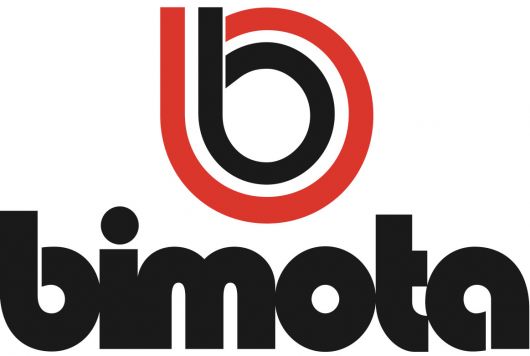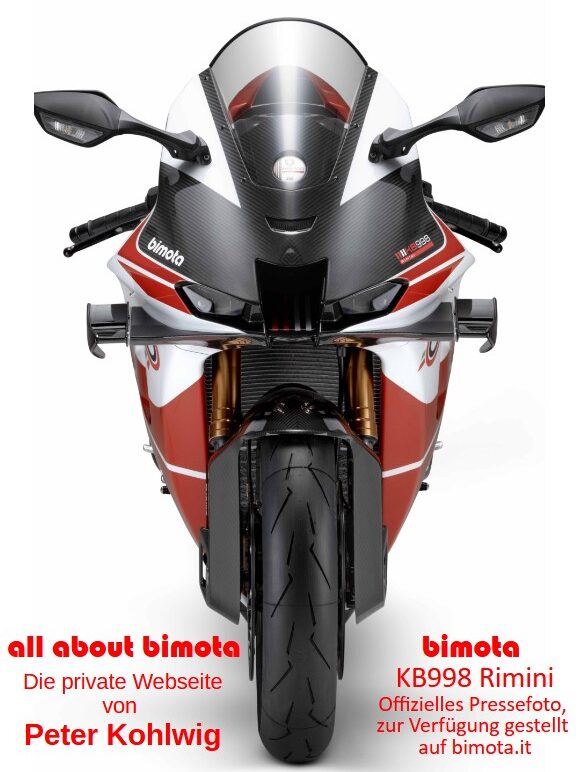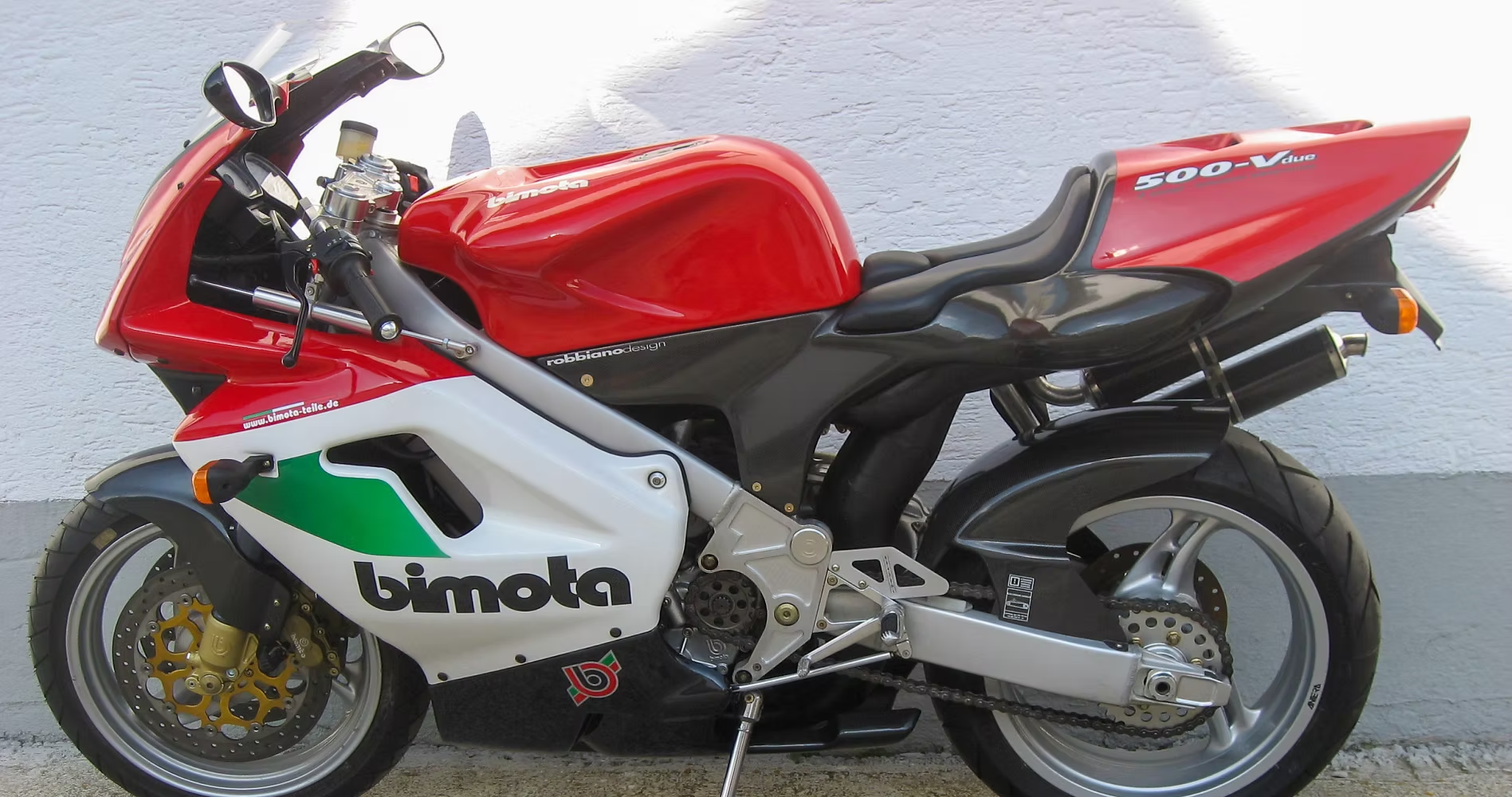
| Designer | Sergio Robbiano | Premiere | Köln 1996 |
| Production period | 1997 – 2000 | Production numbers | 340 |
| Power | 81 KW (110 PS) | Displacment | 499 cc |
| Topspeed | 243 km/h | Weight | wet 180 kg dry 165 kg |
| Price | 20.650 DM (1996) | Colours | red / white / green carbon |
| Technical basis | Bimota V2 |
In 1996, Bimota introduced the Vdue, the first motorcycle equipped with an in-house-developed engine. Since the early 1990s, the company had been working on its own V2 engine for a return to Grand Prix racing. However, due to changes in regulations as well as technical and financial reasons, this never materialized. Instead, the Grand Prix machine was developed into an extremely sporty, street-legal version.
The key features of the liquid-cooled 500 cm³, 90° V2 two-stroke engine include a design with two counter-rotating crankshafts and simultaneously firing cylinders. To improve performance, fuel efficiency, and emissions, Bimota opted for direct fuel injection. The challenges were immense, as this technology was being used for the first time, meaning there was no prior experience to rely on for tuning.
The V2 engine was rigidly mounted in an open-bottom frame welded from oval aluminum profiles. Milled aluminum plates were welded to the upper frame rails to accommodate the swingarm pivot and the engine. Other high-end components included 17-inch Antera wheels, a Brembo braking system, an Öhlins or Paioli rear shock, a 46 mm Paioli fork, and extensive use of carbon fiber, such as for the self-supporting seat unit and rear frame—features typical of Bimota.
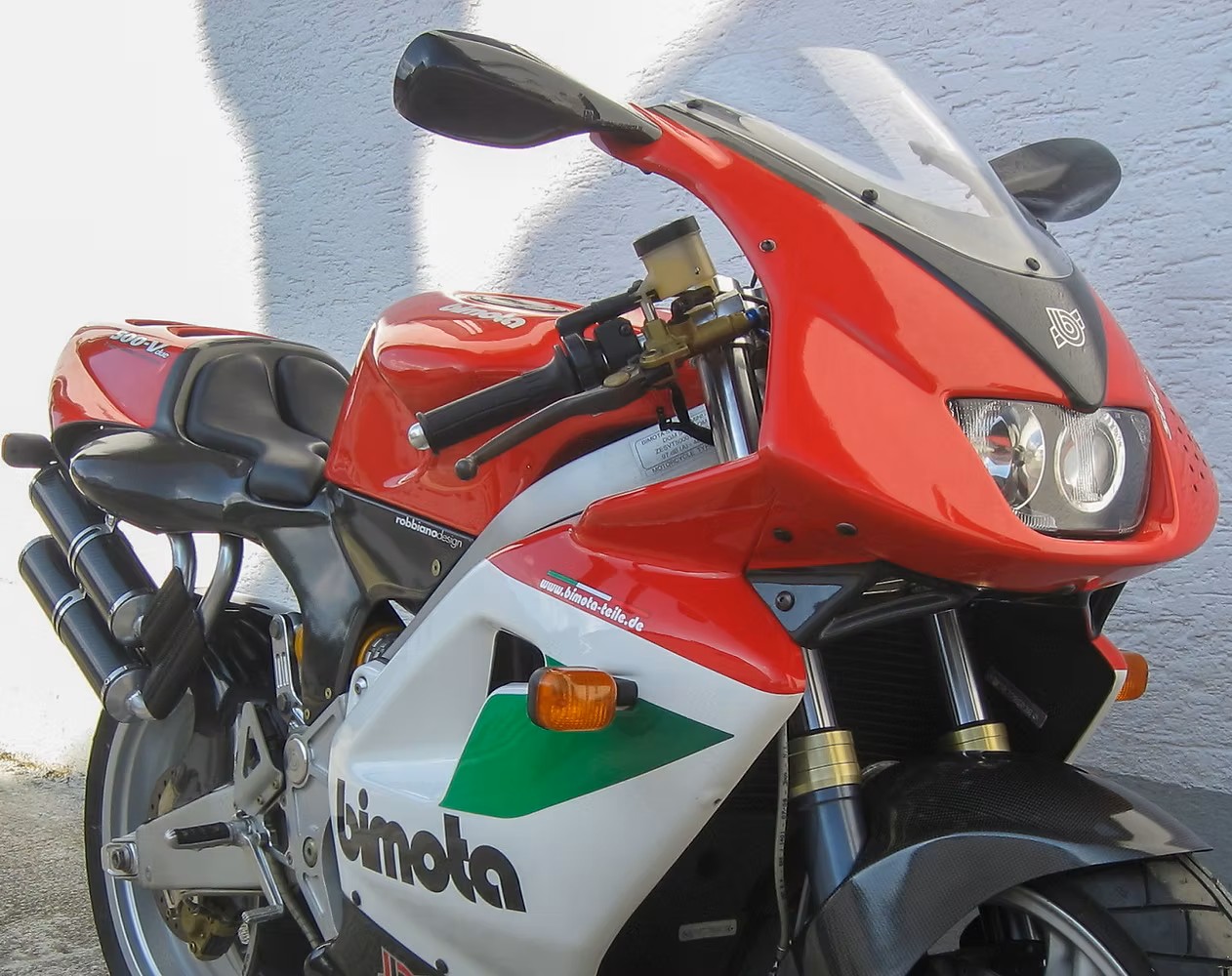
At its market launch in 1997, the Vdue was claimed to produce 110 hp at 9,000 rpm and nearly 90 Nm of torque at 8,000 rpm. However, customer feedback soon revealed that the direct injection system was not yet ready for mass production. As a result, sales were halted in 1998, and nearly 200 units that had already been delivered were recalled.
In the summer of 1997, the German magazine Motorrad test-rode a pre-production Vdue in Hockenheim and struggled with engine tuning. Aside from that, the bike impressed with its „nimble handling“ and „outstanding stability,“ even over bumps and longitudinal grooves while cornering.
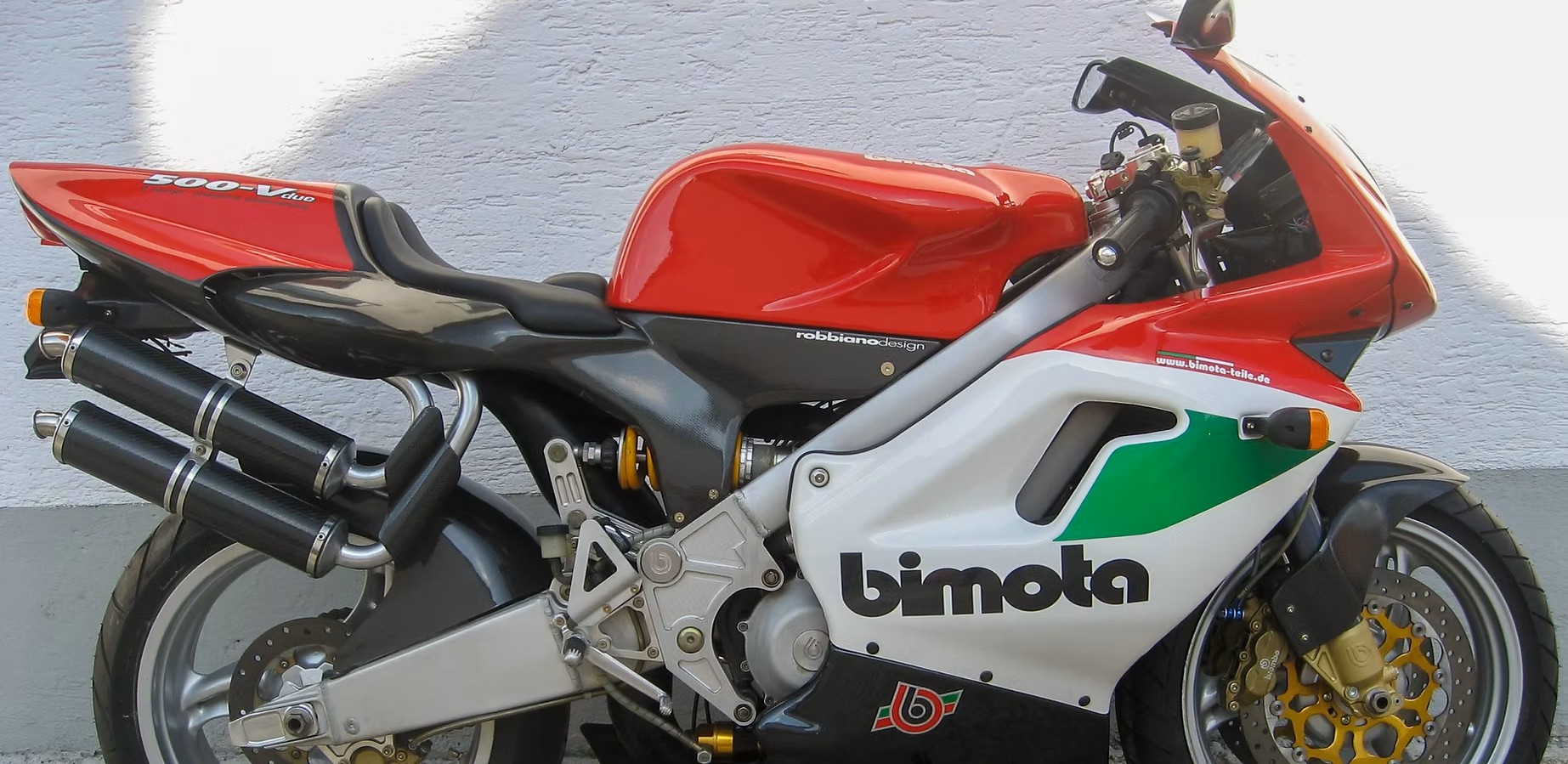
In 1998, Bimota introduced the revised Vdue Evoluzione, replacing the direct injection system with two 39 mm Dell’Orto carburetors for fuel mixture formation. However, the Evoluzione failed to regain customer trust, and sales remained sluggish.
Ultimately, the Vdue severely damaged Bimota’s reputation and proved to be a financial disaster for the small company.
